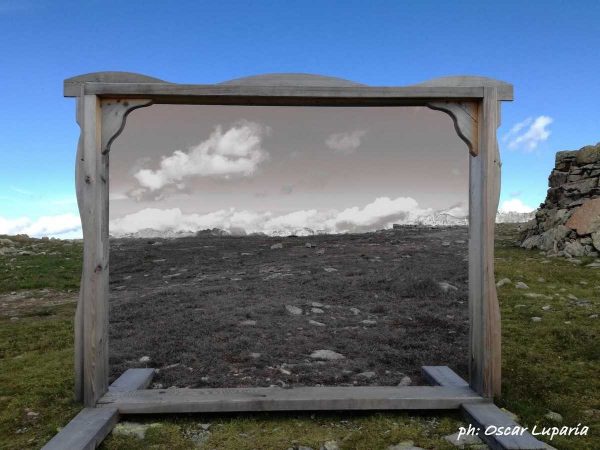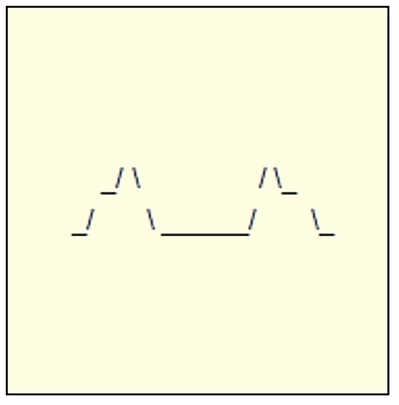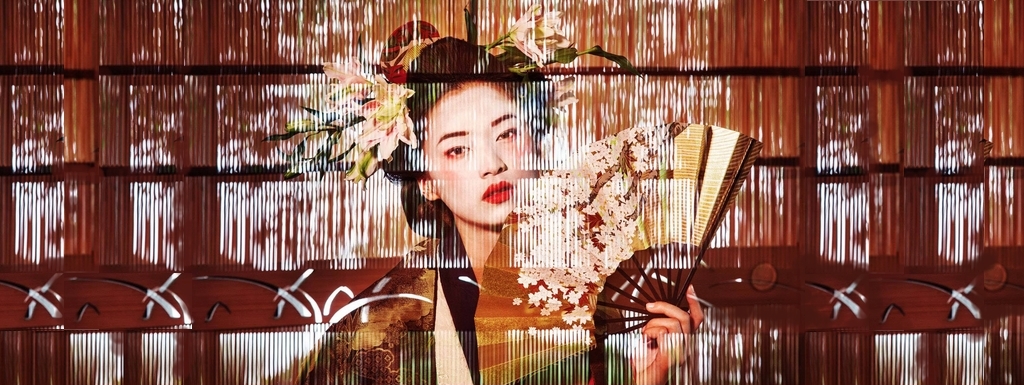nessuna ispirazione . . .
il vento canta attraverso
il mio polsino
nicholas klacsanzky
Cosa hanno in comune fra loro haiku e sogno?
Haiku e sogno sono entrambi prodotti dalla mente creativa: di giorno l’uno, di notte l’altro.
Ma quello che li rende estremamente simili è il fatto che entrambi parlino per immagini, malgrado il sogno possa presentarsi come una sequenza di immagini mentre usualmente quelle che compongono lo haiku sono due soltanto (o, occasionalmente, tre…).
Entrambi mostrano, non raccontano.
Sia lo haiku sia il sogno portano con sé un senso che è tanto più coinvolgente quanto più numerose sono le possibili chiavi di lettura ; ed entrambi possono essere definiti prodotti che danno voce e corpo a risorse inaspettate nel momento in cui le rispettive immagini vengono alchemicamente accostate fra loro.
Inoltre i sogni, come gli haiku, possono talvolta essere letti anche al rovescio, arrivando finanche a dire l’esatto contrario…
Il sogno, prodotto accurato che la mente genera nel corso del sonno REM, è la manifestazione di molteplici e condensate istanze, emozioni e bisogni sfuggiti ad una efficace elaborazione diurna.
Filtrati di giorno, impigliati nel pettine dell’inconscio, di notte ne subiscono la condensazione in un’unica soluzione, che la maggior parte delle volte soddisfa numerosi sensi ed è altresì definita lavoro onirico.
Simile ad un mosaico, nel sogno si declinano le intuizioni, i desideri, gli atti mancati cui il sognatore aspirava, talvolta ostacolato da realtà contingenti esterne o interne, dunque anche inconsce.
notizie di te
nel mio sogno sembra
che tu stia bene
lucia fontana
failed haiku, n° 10, october 2016
Può capitare che il sogno assuma la forma di una premonizione.
Ciò in realtà accade perché dettagli rimasti inosservati alla mente conscia non sono sfuggiti a quella preconscia e non-conscia, così che il cervello si prepara anzitempo a vivere un accadimento programmato nel futuro imminente, giungendovi però in una condizione di maggior ricettività e attenzione.
Regioni sottocorticali del nostro cervello, ontogeneticamente più arcaiche, captano in modo istintivo e fulmineo informazioni che sfuggono alla corteccia cerebrale, comunemente denominata in italiano “materia grigia”, preposta a funzioni di pensiero più sofisticate e dunque richiedenti più tempo per formulare, concepire, interpretare.
Attraverso il sogno le emozioni irrisolte trovano spazio, possibili sbocchi, soluzioni. Esso diviene una sonda che si espande facendo spazio ai desideri più reconditi, legittimandoli.
cesto di frutta
ad uno ad uno afferro
ogni mio sogno
lucia fontana
failed haiku, vol.2, n. 21, september 2017
Tuttavia, il lavoro onirico può anche avvalersi di una funzione definita da Sigmund Freud “censura onirica”. Il suo effetto può rendere misterioso, criptico e non sempre di facile lettura un sogno portatore di desideri “proibiti”, cioè non accettati dal sognatore come congrui alla sua vita diurna.
Essa fa affondare il ricordo del sogno stesso nell’oblio, proteggendo la mente conscia dall’esposizione a fatti a cui è impreparata, benché nel contempo la soddisfi facendole vivere inconsciamente le emozioni attraverso quello stesso sogno così poco o per nulla chiaro all’atto di rievocarlo.
un girasole selvatico
dondola nel crepuscolo
sogno dimenticato
lucia fontana
Haikuniverse, september 7, 2017

“‘Ecologicamente” l’inconscio può sognare e sognare ancora – in innumerevoli versioni – una medesima situazione, cosa che accade quando cerca di far superare un evento difficile alla persona che lo ha sperimentato, mettendo più volte in scena lo stesso copione del fatto accaduto, in varianti che favoriscano, dopo una sequenza di sogni altresì detti “ricorrenti”, il raggiungimento del lieto fine.
E, dunque, ci accorgiamo di aver sognato, però al risveglio abbiamo la sensazione che il sogno sprofondi nell’oblio al punto che riusciamo a rammentarci solo pochi frammenti, talvolta uno, talaltra nessuno.
Questo è l’effetto della censura onirica.
Freud dedica molto interesse a questa funzione, che pare serva a tutelare dalle valutazioni, dalle razionalizzazioni e dal giudizio super-egoico la delicata e multiforme vita sommersa e desiderante di cui disponiamo e di cui spesso siamo poco consapevoli, ma da cui è possibile attingere energia nei momenti di travaglio o di passaggio e di forte cambiamento.
Se vogliamo capire come funziona la censura onirica sul ricordo dei sogni è sufficiente assimilarla alla marea, la quale, crescendo, cancella le tracce lasciate sulla battigia.
marea del sogno cuore e nomi cancellati in un’onda
lucia fontana
failed haiku,, vol.2, n. 22, october 2017
il sogno di giulio
Nella nostra veste di haijin conosciamo un po’ tutti a livello intuitivo come si arriva a scrivere uno haiku.
Qui di seguito, invece, voglio rendervi partecipi di un sogno che fa utilizzo di varie immagini fra loro inanellate.
Quello che cercherò di mostrarvi (attraverso il succinto racconto di qualche mese del mio lavoro) è come il sognatore può esordire da un’immagine di partenza, creare un’elaborazione della suddetta immagine tramite il lavoro inconscio, per poi produrre una seconda immagine in giustapposizione ai contenuti iniziali, spiazzando in primis se stesso (il sognatore) ma anche lo stesso ascoltatore…
Con la descrizione di questo caso, di provenienza squisitamente psicoanalitica, intendo dunque mettere in evidenza quanto incisiva sia la vicinanza fra la formazione inconscia del sogno e l’accostamento di immagini nella composizione poetica dello haiku.
Inutile dire che uno haiku ben riuscito probabilmente funzionerà meglio se capace di creare un effetto “sogno ad occhi aperti”, evocando uno stato di rêverie, favorendo – similmente al sogno – più chiavi di lettura, restando “aperto” (e dunque insaturo), proprio come un sogno rammentato solo in parte, mai del tutto.
In una riflessione di Alyson Ludek con riferimento alle forti implicazioni fra madre natura e natura umana nella poetica di Michael Dylan Welch, (cosa che vedremo a breve anche nel sogno), la poetessa osserva che lo stesso haiku project (2003) di Welch evidenzia l’importanza per l’autore non solo dell’immagine sensoria, ma individua il legame fra lo haiku e la fotografia, e come entrambi registrino l’istante ritraendo l’esatto momento cui ci si riferisce.
(Welch haiku project, Open Window http://www.brooksbookshaiku.com/welch/index.html )
Anche il sogno si compone di immagini, simili a fotogrammi.
Le persone che raccontano i propri sogni non descrivono un’idea del sogno, bensì l’immagine più o meno precisa rimasta impressa nella loro mente come un’istantanea sul negativo di una pellicola…
Molto spesso, fra l’una e l’altra, succedono anche cose che le persone possono dimenticare, tanto da far apparire il sogno assurdo per il suo “saltare” da un’immagine all’altra senza apparente collegamento fra loro, o più spesso con la biografia dell’individuo.
Tuttavia un “trattamento analitico” può individuare il senso sottostante che ad una ad una le tiene profondamente collegate… […]
Un’elaborazione onirica è, spesso e indubbiamente, un dono che la psiche fa a se stessa quando alcuni contenuti sono approdati alla coscienza in quanto maturi per dare corso ad un cambiamento.
Certi sogni costituiscono svolte nella vita di un individuo attento e ricettivo. L’intreccio sinergico di esperienze e loro elaborazione onirica risveglia risorse che nutrono un percorso di crescita personale vitalizzandolo a livello emotivo e cognitivo, facilitando l’intuizione e suggerendo dall’interno come il soggetto possa avanzare coniugando la sua vita al mondo e dialogando col mondo per la sua vita.
Un esempio può essere individuato in un miglioramento dentro un percorso clinico segnalato da un paziente al suo terapeuta attraverso il suo sogno.
Qui a seguire il caso di “Giulio”, pseudonimo che per ovvie ragioni di privacy adotterò in luogo del vero nome del soggetto in questione, un giovane paziente di 27 anni che ne ha accettato la divulgazione, dopo averlo portato da me in seduta.
Giulio ha perso dopo otto anni di fidanzamento la sua fidanzata, che qui chiameremo Speranza. Ho conosciuto Speranza quando dava segni di depressione e profonda sofferenza per la prolungata difficoltà a lasciarsi andare all’amore da parte di Giulio, che tendeva a sminuirla e criticarla per il suo carattere “troppo entusiastico, troppo romantico, troppo genuino”…
Speranza, che non riusciva a mangiare, a dormire, a respirare, ha infine lasciato Giulio con un atto di estremo coraggio, cui poi è seguita la collera del tempo perduto, non essendo stata amata per quello che realmente era sempre stata, dal suo fidanzato.
Dal canto suo, Giulio, malgrado sia stato lasciato da Speranza, ne segue il consiglio e decide di vedermi.
Scopre che il suo ideale di vita di coppia è fasullo, comprende che i suoi genitori simulano da anni di essere una famiglia felice (pur in mancanza di gesti o parole d’amore reciproci) e realizza che l’amore, quello vero, era invece in ogni molecola di Speranza. Decide quindi di riconquistarne il cuore, con gentilezza e pazienza, scoprendo il lato fragile ma ricco d’amore che ha sempre tenuto sepolto dentro di sé per timore di essere respinto,come gli accadeva col padre.
Decide di affrontare il rapporto sminuente che ha con quest’ultimo, insieme al quale lavora nell’azienda di famiglia, e con cui, per anni, ha avuto solamente dialoghi a monosillabi, nel tentativo di non esserne ferito.
Giulio porta in seduta il proprio transgenerazionale, collegando aspetti del suo mondo con quelli del padre, del nonno…
Finalmente, dopo un percorso terapeutico rivelatosi fruttuoso, sente che può fronteggiare suo padre e”tenergli testa”.
A questo punto, ecco che Giulio sogna…
Sono in montagna, a rilassarmi sulla sdraio in terrazza, quando sento un lieve fragore, guardo sulle montagne e vedo in lontananza una piccola frana, rocce che rotolano giù dal declivio e lo faccio notare a mia nonna, ma lei non vede niente. Ad un certo punto vedo come delle esplosioni, mentre le rocce che saltano via dalla montagna raggiungono la terrazza. Io e mia nonna entriamo subito in casa. Resto sulla porta a guardare i sassi che arrivano fino a dove poco prima ero seduto tranquillo… vedo persino la mia Vespa rossa che prima non c’era…
Mi accorgo anche che sulla terrazza è rimasto il mio cane Luis, tutto bagnato sebbene non stia piovendo, che faccio entrare in casa con me.
Una volta in casa, vado da mio nonno, ma mentre gli sto per dire quello che sta succedendo fuori, mia nonna mi blocca (senza che apra bocca capisco che non vuole fargli sapere nulla, perché lui è una persona molto ansiosa e incline a preoccuparsi).
Poco dopo arriva una vicina di casa, assai turbata, e prima che possa parlare con mio nonno la fermo e le dico che lui non sa niente.
Ad un certo punto compare Speranza, la porto sul terrazzo e le faccio vedere la montagna spianata.
Disegni realizzati al cellulare da Giulio per mostrarmi il cambiamento subito dalla montagna con la frana.

image a

image b
Come il disegno stilizzato ci indica, il caso di Giulio è un emblematico superamento del complesso edipico.
Prima c’era il padre-montagna, un padre tabù, che lui non osava affrontare.
Dopo il percorso terapeutico si stagliano invece due cime, di identica altezza dopo che il monte originario è parzialmente franato.
Le cime, Giulio – il padre di Giulio, costituiscono il sancito passaggio da ragazzo a uomo, un uomo ora capace di amare e di lottare per la donna amata, Speranza, ricondotta nel suo sogno insieme al cane Luis, che, nel corso della loro separazione, ha vissuto a turno da entrambi, coperto di vero amore…
Attualmente Giulio e Speranza sono tornati a frequentarsi, fanno insieme molti piccoli viaggi sulla Vespa e non solo, vanno d’accordo e riescono a divertirsi come mai in otto anni erano riusciti, oltre a parlarsi per ore…
A loro il mio più caro augurio di felicità…
lasciando il guscio . . .
sogno d’essere accolti
d’esser se stessi
lucia fontana

photo by gianni rossi
~o~
dreaming haiku
no inspiration . . .
the wind sings through
my cuff
nicholas klacsanzky
What do they have in common with each other?
Haiku and dreams are both produced by the creative mind: one during the day, the other at night., But what makes them extremely similar is the fact that they are both based on images, despite that dreams are presented as a sequence of images, while usually those that make up haiku are only two (or occasionally three). Both show—they do not tell.
Both haiku and dreams have a sense that is all the more engaging than the many possible renditions; and both can be defined as products that give voice and body to unexpected resources when their images are alchemically aligned with each other.
Dreams, such as with haiku, can sometimes be perceived in reverse, with viewers coming to the exact opposite conclusion of what was intended.
Adream, an accurate product that the mind generates during REM sleep, is the manifestation of multiple and condensed instances, emotions, and needs escaping from effective day-to-day reality.
The day isfiltered, entangled in the comb of the unconscious, and undergoes condensation at night in a single solution that usuallysatisfies many senses and is also termed dream job.
Similar to a mosaic, intuitions, desires, and missed actions are conjugated in the dream. Of course we talk about wishes thatthe dreamer aspires to, sometimes hindered by external or internal contingencies, also ignored in the dream yet to come to conscience.
news of you
in my dream it seems
you are fine
lucia fontana
failed haiku, vol 2 n° 10, october 2016
It may happen that the dream takes the form of a premonition.
This really happens, because details left unnoticed to the conscious mind have not escaped to the preconceived and unconscious, so the brain prepares itself to live a planned event in the imminent future, but comes into a more receptive and attentive state.
Subcortical regions of our brain, which are ontogenetically more archaic, instinctively capture and lighten information that escapes the cerebral cortex, commonly referred to as “gray matter”, is devoted to more sophisticated thought functions and therefore has more time to formulate, conceive, and interpret .
Through dreams, unexplained emotions find space, possible outlets, and solutions.
It becomes a probe that expands by giving space to the most desperate desires, legitimizing them.
fruit basket
one by one I catch
my dreams
lucia fontana
failed haiku,, vol.2, n. 21, september 2017
However, dream work can also take advantage of a function defined by Sigmund Freud as “dream-like censorship”. Its effect can make mysterious, cryptic, and not-always-easy-toread “forbidden” desires that are not always accepted by the dreamer as congruent with his or her day-to-day life.
It causes the memory of the dream to sink into oblivion, protecting the conscious mind from being exposed to facts of which it is unprepared, while at the same time satisfying it by making it unconsciously experience emotions through that dream that are miniscule or not at all clear in the act of recall.
wild sunflower
swings in the dusk
forgotten dream
lucia fontana
haikuniverse,september 7, 2017

photo by oscar luparia
The unconscious can dream and dream about—in countless versions—an identical situation, which happens when trying to overcome a difficult event for the person who experienced it, using the same script over and over again for a scene, in variants that favor, after a sequence of dreams also called “recurring”, the achievement of a happy ending.
And then we realize we have dreamed, but when we awaken, we have the feeling that dreams fall into oblivion to the point that we can only remember a few fragments, or even one.
This is the effect of dream-like censure. Freud devoted a great deal of interest to this function, which seems to serve as protection from the evaluations, rationalizations, and super-ego judgment of our delicate, multiformed, submerged, and desirable lives, and which we are often not aware of, but from which we can draw energy in moments of labor or passage and change.
If we want to understand how dreamlike censorship works with the memory of dreams, it is enough to associate it to the tide, which, by growing, erases the traces left on the shore.
dream tide heart and names erased in a wave
lucia fontana
failed haiku,, vol.2, n. 22, october 2017
julius’ dream
In our haikai style, we all know intuitively how to write a haiku.
Below, I want to share with you a dream that makes use of various pictures that are linked to one another.
What I will try to show you through the concise story of a few months of my work is how the dreamer can move from a starting image, create an elaboration of that image through unconscious work, and then produce a second image in juxtaposition to the initial contents, primarily surprising oneself but also the listener …
With the description of this case, of exclusivelypsychoanalytic origin, I intend to point out how incisive the proximity is between the unconscious formation of dreams and the approach of images in the poetic composition of haiku.
Needless to say, a successful haiku will probably work better if it can create a “daydreaming” effect, evoking a state of reverie, favoring—similar to a dream—more reading keys, remaining “open” (and therefore unsaturated) just like a dream remembered only in part, never entirely clear how it ends…
About the haiku project by Michael Dylan Welch, Alyson Ludek, referring to the strong implications of mother nature and human nature, which we will soon see in the dream, mentions the importance for the author of the sensory image, identifies the link between haiku and photography, and how they both register the instant, depicting the exact moment we are referring to.
(Welch haiku project, Open Window http://www.brooksbookshaiku.com/welch/index.html)
The dream also consists of pictures, similar to frames.
People who tell their dreams do not describe an idea of the dream, but more or less precise image that is imprinted in their minds as a snapshot on the negative of a film …
Very often, people can forget what happens between one shot and another, so the dream seems absurd, “jumping” from one image to the next without apparent linkage, or thicker with the biography of the individual.
However, an “analytical treatment” can identify the underlying meaning that one by one holds them deeply connected. […]
Dreamlike elaboration is, often and undoubtedly, a gift that the psyche gives to itself when some content has come to the consciousness as it grows wiser to undergo a change.
Certain dreams are made in the life of an attentive and receptive individual. The synergic interplay of experiences and their dream processing awakens resources that have a personal growth path, vitalizing it emotionally and cognitively, facilitating intuition and suggesting from within how the subject can advance by combining his or her life with the world, and by dialogue with the world or her
An example can be identified in an improvement within a clinical path signaled by a patient to his therapist through his dream.
Here follows the case of “Julius”, a pseudonym that for obvious reasons of privacy I will adopt in place of the true name of the subject in question, a young 27-year-old patient who has accepted the disclosure after having brought it to me in therapy.
Julius, after eight years of engagement, has lost his girlfriend, whom we will call Hope. I knew Hope when she gave signs of depression and deep sorrow for the long-lasting difficulty of lack of love and aloofness by Julius, who tended to undermine her and criticize her for her “too enthusiastic, too romantic, too genuine” nature … Hope, who could not eat, sleep, and breathe, finally left Julius with an act of extreme courage, followed by the anger of the lost time, not being loved for what she has always been by her boyfriend.
Julius, in spite of being left behind by Hope, follows the suggestion of the girl and decides to see me.
He finds that his ideal of couple life is fake, he understands that his parents have been simulating for years how to be a happy and peaceful family (despite lacking reciprocal gestures or love words) and realizes that love, the real one, was instead in each of Hope’s molecules. He then decides to regain her heart with kindness and patience, discovering the fragile but rich side of love he has always kept buried inside for fear of being rejected, as he experienced with his father.
He decides to deal with the deplorable relationship he has with his dad, along with whom he works in the family business, and for years has only had monosyllabicic dialogues in an attempt not to be hurt.
Julius brings in his trans-generational connection, linking aspects of his world with those of his father and grandfather …
Finally, after a successful therapeutic pathway, he feels he can face his father and “hold his head high”.
At this point, here’s what Julius dreams about …
“I’m in the mountains, relaxing on the terrace deck chair, when I hear a slight rustle. I look at the mountains and see a small landslide in the distance, rocks rolling down from the slope, and I make it to my grandmother, but she sees nothing. At some point, I can see how the explosions are, while the rocks jumping off the mountain reach the terrace. My grandmother and I go home right away. I stand at the door to look at the stones reaching where I was sitting quietly before … I even see my red Vespa that was not there before …
I also notice that my dog Luis was still on the terrace, all wet though it is not raining, that gets into my house with me.
Once in the house, I go to my grandfather, but while I’m going to say what’s happening outside to my grandfather, my grandma quiets me (without opening my mouth, I know she does not want to let him know anything because he is a very anxious person and prone to worry).
Shortly after, a close neighbor comes in very upset, and before I can talk to my grandfather, I’ll tell him he does not know anything.
At some point, Hope appears at the harbor on the terrace and I show her the flat mountain. Drawings made on the cellphone by Julius to show me the change from the mountain with the landslide.

image a

image b
As the stylized drawings indicate, Julius’ case is an emblematic overcoming of the Oedipus complex. First there was the father-mountain, a taboo father, whom he did not dare to face.
After the therapeutic path, two peaks come of the same height, after the original mountain is partially defaced.
The tops, Julius and Julius’ father, are the sanctioned passage from boy to man, a man now capable of loving and struggling for his beloved woman. Hope, led back in his dream with his dog Luis, which, during their separation, lived in turn with both, covered with true love …
At present, Julius and Hope have come back to attend my sessions, they make many small trips together on the Vespa, and not only do they agree and succeed in having fun as they have never succeeded in eight years, as well as talking for hours …
To them, my dearest wish of happiness …
leaving the shell. . .
the urge to be welcomed
to be oneself
lucia fontana

photo by gianni rossi

Creative and interesting collaboration Lucia. Your work is a great part of the haiku world with its probing of the many dimensions, realms of us and our many unique worlds I am always left in thought, and then beyond thought …Grazie e ciao
I’m pleased you are always left in thought and then beyond. . .
Thanks to you, dear Steve, for your appreciation.